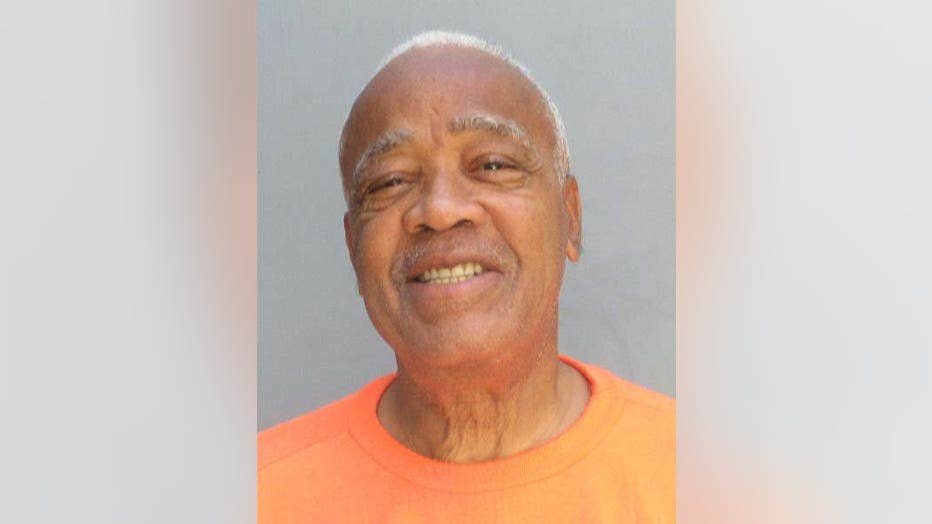Murray Hooper: Arizona death-row prisoner makes last-minute claim to court
PHOENIX - PHOENIX (AP) — An Arizona prisoner scheduled to be executed Wednesday in the 1980 killings of two people asked the U.S. Supreme Court to review his claim that authorities had until recently withheld that a survivor had failed to identify him in a photo lineup.
Lawyers for Murray Hooper, who was convicted of killing William "Pat" Redmond and his mother-in-law, Helen Phelps, say the existence of the photo lineup wasn’t disclosed until this month.
A prosecutor told the state’s clemency board that Redmond’s wife, Marilyn, who survived being shot in the head, had been unable to identify Hooper as the attacker when she was shown a photo lineup. However, authorities now insist no such lineup was shown to Marilyn Redmond and that the claim is based on a mistake a prosecutor made in a letter to the board.
Marilyn Redmond eventually identified Hooper in an in-person lineup.
Hooper’s arguments have already been rejected twice this week by state courts, with the Arizona Supreme Court concluding Monday that the claim focusing on a photo lineup "has no evidentiary support and no basis in fact."

Murray Hooper (Arizona Dept. of Corrections)
Hooper’s attorneys keep pressing the matter. "The prosecutor’s belated admission flatly contradicts the state’s pretrial and trial assertions that no such (photo) lineup had ever been administered," Hooper’s lawyers told the U.S. Supreme Court.
Hooper also is asking the 9th Circuit Court of Appeals to postpone his execution as he appeals a ruling that rejected his bid to allow fingerprint and DNA testing on evidence from the killings.
His lawyers said Hooper is innocent, that no physical evidence ties him to the killings and that testing could lead to identifying those responsible. They say Hooper was convicted before computerized fingerprint systems and DNA testing were available in criminal cases.
Authorities say Hooper and two other men forced their way into the Redmond home on Dec. 31, 1980. The three victims were bound, gagged, robbed and shot in the head. Marilyn Redmond testified against Hooper at his trial.
Two other men, William Bracy and Edward McCall, were convicted in the killings but died before their death sentences could be carried out.
Authorities say Robert Cruz, who was alleged to have had ties to organized crime, hired Hooper, Bracy and McCall to kill Pat Redmond, who co-owned a printing business. They said Cruz wanted to take over the business and was unhappy that Redmond had rejected his offers to enter several printing contracts with Las Vegas hotels, according to court records. In 1995, Cruz was acquitted of murder charges in both deaths.
Hooper’s lawyers say Marilyn Redmond’s description of the assailants changed several times before she identified their client, who said he was not in Arizona at the time. They also raised questions about the benefits received by witnesses who testified against Hooper, including favorable treatment in other criminal cases.
Hooper would be the state’s third prisoner put to death this year after Arizona resumed carrying out executions in May, following a nearly eight-year hiatus attributed to both the difficulty of obtaining lethal injection drugs and criticism that a 2014 execution was botched.
Arizona has 111 people on death row, 22 of whom have exhausted their appeals, according to the state attorney general’s office.
Previous reports

Lawyers for Murray Hooper file new appeal as execution date nears
Murray Hooper?s attorneys filed another petition for post-conviction relief Monday in Maricopa County Superior Court, saying "newly discovered material facts" have been discovered in the case and the 76-year-old inmate should be entitled to a new trial.

Murray Hooper: Arizona prisoner to die by lethal injection
An Arizona prisoner who is scheduled to be executed in three weeks for two 1980 killings will be put to death by lethal injection.

Murray Hooper: Death-row inmate?s failed testing bid keeps Arizona execution on track
An execution planned next month for an Arizona prisoner remains on track after a judge rejected the condemned man?s request to have fingerprint and DNA tests conducted on evidence from the two 1980 killings for which he?s scheduled to be put to death.

